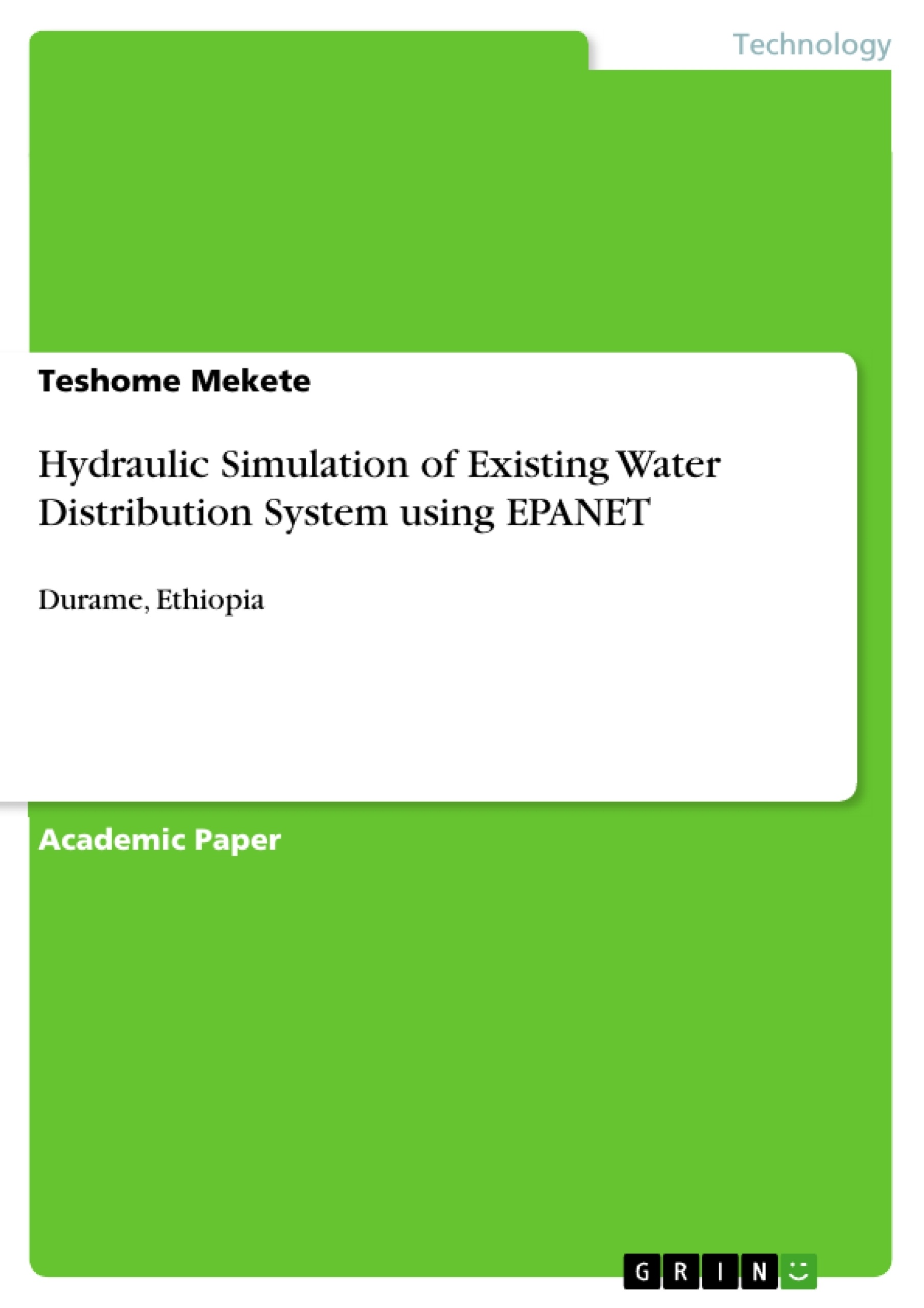The objective of this work is to simulate distribution network and to improve the efficiency of existing water distribution network to supplying potable water to end users. Network of the study area is simulated by EPANET data of topography of the study area is collected using land survey instrument per the known latitudes, longitudes for the study area. The scheme design is organized so that required output is attained by using available input parameters like population of the study area, rate of growth in population and elevation at required point to install service reservoir. Therefore, with all the available input parameters, now the network is run through EPANET software and the results are thoroughly checked with standards. At the final stage, the output results that are obtained after successful run from EPANET tool, they are cross checked thoroughly with standard required values.
If any of the corresponding values are not within acceptable bounds, then the network is adjusted accordingly to the required input parameters and again the network will be examined in EPANET software. This procedure is repeated until the parameters like velocity, friction factor, water head, pressure head, diameter and friction factor values are in the precise range. Pressure head at all nodes in the study area are having appropriate pressure to extract water. Flow in all pipes or links are adequate enough to survive the pressures at nodes. Roughness coefficients of pipes are all quite adequate as the head loss due to friction is little. It is also proposed to install air valves at high elevations and sluice valves at low elevations. The practical applications like: plan and improve a system’s hydraulic performance, improve the quality of water distributed to consumers and study the disinfectant using based on water type.
Inhaltsverzeichnis (Table of Contents)
- 2. ROLE OF EPANET IN NETWORK ANALYSIS
- 2.1 APPLICATIONS OF EPANET
- 3. OBJECTIVES
- 4. STUDY AREA
- 4.1 TOPOGRAPHY
- 4.2 CLIMATE
- 5. METHODOLOGY
- 6. ASSUMPTIONS
- 7. CONCLUSION
- 8. ACKNOWLEDGMENT
- REFERENCES
Zielsetzung und Themenschwerpunkte (Objectives and Key Themes)
This paper focuses on the simulation of an existing water distribution network in Durame, Ethiopia, using the EPANET software. The primary goal is to improve the efficiency of the network in supplying potable water to end users while considering key parameters such as pressure heads at all nodes, pipe diameters, and flow rates. The study aims to achieve this through iterative adjustments to the network based on standards and simulation results obtained from EPANET.
- Hydraulic simulation of Water Distribution Networks (WDN) using EPANET software.
- Improving the efficiency of existing water distribution networks in supplying potable water.
- Ensuring adequate pressure heads at all nodes within the network.
- Optimizing pipe diameters and flow rates for efficient water distribution.
- Applying standards and best practices to ensure the quality of water delivered to consumers.
Zusammenfassung der Kapitel (Chapter Summaries)
The paper begins by discussing the role of EPANET in network analysis, highlighting its advantages over traditional methods. The significance of EPANET for simulating water distribution systems is emphasized, and its wide range of applications is explored. Following this, the paper details the objectives of the study, which center around simulating the distribution network in Durame and improving its efficiency in delivering potable water to end users. The study area, Durame town, is then described, including its topography, climate, and demographic information. The methodology adopted for the network analysis is outlined, focusing on the simulation process using EPANET and the collection of relevant data. The paper then lays out the assumptions made during the analysis, emphasizing the importance of these assumptions in achieving accurate results. The paper concludes by presenting the scheme design of the distribution system and the results obtained from the EPANET simulation. It provides insights into the success of the simulation process and any necessary adjustments made to ensure the network's efficiency and effectiveness.
Schlüsselwörter (Keywords)
The key concepts explored in this paper include EPANET, hydraulic simulation, water distribution networks, network analysis, pressure head, pipe diameter, and flow rate. The paper delves into the practical application of EPANET as a tool for simulating and improving water distribution networks, focusing on its ability to ensure adequate pressure heads at nodes, optimize pipe sizes, and ultimately provide efficient and reliable water delivery to consumers.
- Quote paper
- Teshome Mekete (Author), 2019, Hydraulic Simulation of Existing Water Distribution System using EPANET, Munich, GRIN Verlag, https://www.grin.com/document/464943




